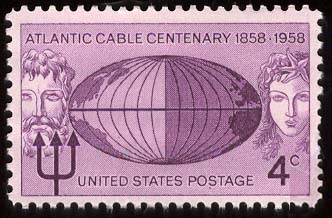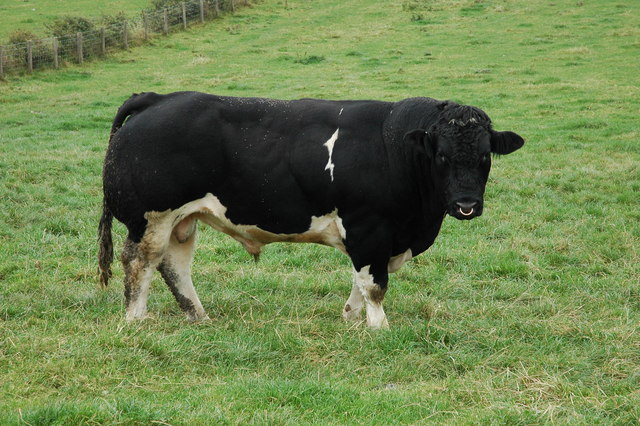|
Karl Elbs
Karl Elbs (13 September 1858 in Alt-Breisach, Baden, Germany – 24 August 1933) was a German chemist. He is credited with developing the Elbs reaction for the synthesis of anthracene. He is also responsible for the Elbs persulfate oxidation. From 1877 he studied natural sciences at the University of Freiburg, receiving his doctorate in 1880 under the direction of Adolf Karl Ludwig Claus. In 1887 he obtained his habilitation, then in 1894 was named a full professor at the University of Giessen University of Giessen, official name Justus Liebig University Giessen (german: Justus-Liebig-Universität Gießen), is a large public research university in Giessen, Hesse, Germany. It is named after its most famous faculty member, Justus von ..., where he served as director of the physico-chemistry laboratory. Published works * ''Die synthetischen Darstellungsmethoden der Kohlenstoff-Verbindungen'', 1889 – Synthetic methods of preparation of carbon compounds. * ''Die Akkum ... [...More Info...] [...Related Items...] OR: [Wikipedia] [Google] [Baidu] |
Alt-Breisach
Breisach (formerly Altbreisach; Low Alemannic: ''Alt-Brisach'') is a town with approximately 16,500 inhabitants, situated along the Rhine in the Rhine Valley, in the district Breisgau-Hochschwarzwald, Baden-Württemberg, Germany, about halfway between Freiburg and Colmar — 20 kilometres away from each — and about 60 kilometres north of Basel near the Kaiserstuhl. A bridge leads over the Rhine to Neuf-Brisach, Alsace. Its name is Celtic and means breakwater. The root ''Breis'' can also be found in the French word ''briser'' meaning to break. The hill, on which Breisach came into existence was — at least when there was a flood — in the middle of the Rhine, until the Rhine was straightened by the engineer Johann Gottfried Tulla in the 19th century, thus breaking its surge. History The seat of a Celtic prince was at the hill on which Breisach is built. The Romans maintained an auxiliary castle on Mons Brisiacus (which came from the Celtic word Brisger, which means waterb ... [...More Info...] [...Related Items...] OR: [Wikipedia] [Google] [Baidu] |
Carbon Compounds
Carbon compounds are defined as chemical substances containing carbon. More chemical compound, compounds of carbon exist than any other chemical element except for hydrogen. Organic chemistry, Organic carbon chemical compound, compounds are far more numerous than inorganic carbon compounds. In general chemical bond, bonds of carbon with other chemical element, elements are covalent bonds. Carbon is tetravalent but carbon free radicals and carbenes occur as short-lived intermediates. Ions of carbon are carbocations and carbanions are also short-lived. An important carbon property is catenation as the ability to form long carbon chains and carbon ring, rings. Allotropes of carbon The known inorganic chemistry of the allotropy, allotropes of carbon (diamond, graphite, and the fullerenes) blossomed with the discovery of buckminsterfullerene in 1985, as additional fullerenes and their various derivatives were discovered. One such class of derivatives is inclusion compounds, in which an ... [...More Info...] [...Related Items...] OR: [Wikipedia] [Google] [Baidu] |
People From Breisgau-Hochschwarzwald
A person ( : people) is a being that has certain capacities or attributes such as reason, morality, consciousness or self-consciousness, and being a part of a culturally established form of social relations such as kinship, ownership of property, or legal responsibility. The defining features of personhood and, consequently, what makes a person count as a person, differ widely among cultures and contexts. In addition to the question of personhood, of what makes a being count as a person to begin with, there are further questions about personal identity and self: both about what makes any particular person that particular person instead of another, and about what makes a person at one time the same person as they were or will be at another time despite any intervening changes. The plural form "people" is often used to refer to an entire nation or ethnic group (as in "a people"), and this was the original meaning of the word; it subsequently acquired its use as a plural form of per ... [...More Info...] [...Related Items...] OR: [Wikipedia] [Google] [Baidu] |
19th-century German Chemists
The 19th (nineteenth) century began on 1 January 1801 ( MDCCCI), and ended on 31 December 1900 ( MCM). The 19th century was the ninth century of the 2nd millennium. The 19th century was characterized by vast social upheaval. Slavery was abolished in much of Europe and the Americas. The First Industrial Revolution, though it began in the late 18th century, expanding beyond its British homeland for the first time during this century, particularly remaking the economies and societies of the Low Countries, the Rhineland, Northern Italy, and the Northeastern United States. A few decades later, the Second Industrial Revolution led to ever more massive urbanization and much higher levels of productivity, profit, and prosperity, a pattern that continued into the 20th century. The Islamic gunpowder empires fell into decline and European imperialism brought much of South Asia, Southeast Asia, and almost all of Africa under colonial rule. It was also marked by the collapse of the la ... [...More Info...] [...Related Items...] OR: [Wikipedia] [Google] [Baidu] |
1933 Deaths
Events January * January 11 – Sir Charles Kingsford Smith makes the first commercial flight between Australia and New Zealand. * January 17 – The United States Congress votes in favour of Philippines independence, against the wishes of U.S. President Herbert Hoover. * January 28 – " Pakistan Declaration": Choudhry Rahmat Ali publishes (in Cambridge, UK) a pamphlet entitled ''Now or Never; Are We to Live or Perish Forever?'', in which he calls for the creation of a Muslim state in northwest India that he calls " Pakstan"; this influences the Pakistan Movement. * January 30 ** National Socialist German Workers Party leader Adolf Hitler is appointed Chancellor of Germany by President of Germany Paul von Hindenburg. ** Édouard Daladier forms a government in France in succession to Joseph Paul-Boncour. He is succeeded on October 26 by Albert Sarraut and on November 26 by Camille Chautemps. February * February 1 – Adolf Hitler gives his "Proclam ... [...More Info...] [...Related Items...] OR: [Wikipedia] [Google] [Baidu] |
1858 Births
Events January–March * January – ** Benito Juárez (1806–1872) becomes Liberal President of Mexico. At the same time, conservatives install Félix María Zuloaga (1813–1898) as president. ** William I of Prussia becomes regent for his brother, Frederick William IV, who had suffered a stroke. * January 9 ** British forces finally defeat Rajab Ali Khan of Chittagong ** Anson Jones, the last president of the Republic of Texas, commits suicide. * January 14 – Orsini affair: Felice Orsini and his accomplices fail to assassinate Napoleon III in Paris, but their bombs kill eight and wound 142 people. Because of the involvement of French émigrés living in Britain, there is a brief anti-British feeling in France, but the emperor refuses to support it. * January 25 – The '' Wedding March'' by Felix Mendelssohn becomes a popular wedding recessional, after it is played on this day at the marriage of Queen Victoria's daughter Victoria, Princess Roya ... [...More Info...] [...Related Items...] OR: [Wikipedia] [Google] [Baidu] |
Bull
A bull is an intact (i.e., not castrated) adult male of the species '' Bos taurus'' (cattle). More muscular and aggressive than the females of the same species (i.e., cows), bulls have long been an important symbol in many religions, including for sacrifices. These animals play a significant role in beef ranching, dairy farming, and a variety of sporting and cultural activities, including bullfighting and bull riding. Due to their temperament, handling requires precautions. Nomenclature The female counterpart to a bull is a cow, while a male of the species that has been castrated is a ''steer'', '' ox'', or ''bullock'', although in North America, this last term refers to a young bull. Use of these terms varies considerably with area and dialect. Colloquially, people unfamiliar with cattle may refer to both castrated and intact animals as "bulls". A wild, young, unmarked bull is known as a ''micky'' in Australia.Sheena Coupe (ed.), ''Frontier Country, Vol. 1'' ... [...More Info...] [...Related Items...] OR: [Wikipedia] [Google] [Baidu] |
Accumulator (energy)
An accumulator is an energy storage device: a device which accepts energy, stores energy, and releases energy as needed. Some accumulators accept energy at a low rate (low power) over a long time interval and deliver the energy at a high rate (high power) over a short time interval. Some accumulators accept energy at a high rate over a short time interval and deliver the energy at a low rate over longer time interval. Some accumulators typically accept and release energy at comparable rates. Various devices can store thermal energy, mechanical energy, and electrical energy. Energy is usually accepted and delivered in the same form. Some devices store a different form of energy than what they receive and deliver performing energy conversion on the way in and on the way out. Examples of accumulators include steam accumulators, mainsprings, flywheel energy storage, hydraulic accumulators, rechargeable batteries, capacitors, inductors, compensated pulsed alternators (compulsators), a ... [...More Info...] [...Related Items...] OR: [Wikipedia] [Google] [Baidu] |
Neue Deutsche Biographie
''Neue Deutsche Biographie'' (''NDB''; Literal translation, literally ''New German Biography'') is a Biography, biographical reference work. It is the successor to the ''Allgemeine Deutsche Biographie'' (ADB, Universal German Biography). The 26 volumes published thus far cover more than 22,500 individuals and families who lived in the German language area. NDB is published in German by the Historical Commission at the Bavarian Academy of Sciences and Humanities and printed by Duncker & Humblot in Berlin. The index and full-text articles of the first 25 volumes are freely available online via the website ''German Biography'' (''Deutsche Biographie'') and the Biographical Portal. Scope NDB is a comprehensive reference work, similar to ''Dictionary of National Biography'', ''Dictionary of American Biography'', ''American National Biography'', ''Dictionary of Canadian Biography'', ''Dictionary of Australian Biography'', ''Dictionary of New Zealand Biography'', ''Diccionario Biográfi ... [...More Info...] [...Related Items...] OR: [Wikipedia] [Google] [Baidu] |
Baden
Baden (; ) is a historical territory in South Germany, in earlier times on both sides of the Upper Rhine but since the Napoleonic Wars only East of the Rhine. History The margraves of Baden originated from the House of Zähringen. Baden is named after the margraves' residence, in Baden-Baden. Hermann II of Baden first claimed the title of Margrave of Baden in 1112. A united Margraviate of Baden existed from this time until 1535, when it was split into the two Margraviates of Baden-Durlach and Baden-Baden. Following a devastating fire in Baden-Baden in 1689, the capital was moved to Rastatt. The two parts were reunited in 1771 under Margrave Charles Frederick. The restored Margraviate with its capital Karlsruhe was elevated to the status of electorate in 1803. In 1806, the Electorate of Baden, receiving territorial additions, became the Grand Duchy of Baden. The Grand Duchy of Baden was a state within the German Confederation until 1866 and the German Empire u ... [...More Info...] [...Related Items...] OR: [Wikipedia] [Google] [Baidu] |
University Of Giessen
University of Giessen, official name Justus Liebig University Giessen (german: Justus-Liebig-Universität Gießen), is a large public research university in Giessen, Hesse, Germany. It is named after its most famous faculty member, Justus von Liebig, the founder of modern agricultural chemistry and inventor of artificial fertiliser. It covers the areas of arts/humanities, business, dentistry, economics, law, medicine, science, social sciences, and veterinary medicine. Its university hospital, which has two sites, Giessen and Marburg (the latter of which is the teaching hospital of the University of Marburg), is the only private university hospital in Germany. History The University of Giessen is among the oldest institutions of higher educations in the German-speaking world. It was founded in 1607 as a Lutheran university in the city of Giessen in Hesse-Darmstadt because the all-Hessian ''Landesuniversität'' (the nearby University of Marburg (''Philipps-Universität Marbur ... [...More Info...] [...Related Items...] OR: [Wikipedia] [Google] [Baidu] |



_1938.jpg)




